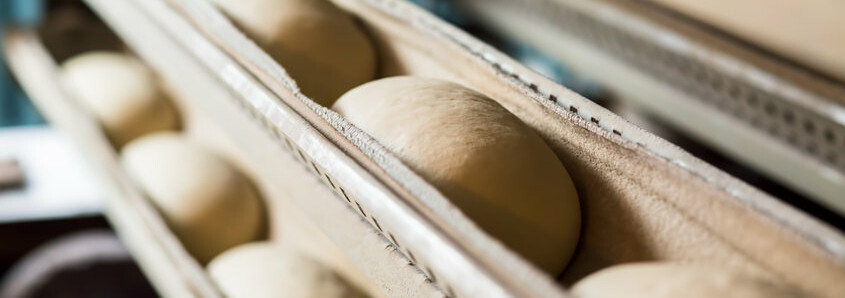
Dough strengthener. Bread improver. Crumb softener. A host of regulators and oxidizers. The whole list falls into the category of dough conditioners. While the definition is pretty open-ended, the results are straight forward. No matter which ones (or combination of ones) you use, they should be accomplishing three main targets for you:
- Consistent outcome and quality: When you’re baking with ingredients like yeast or sourdough, you’re faced with plenty of variables. And don’t forget factors like temperature or humidity. Dough conditioners help stabilize these variables and more so you can bake consistently with less waste.
- Mechanical dough processing: If you’re looking for a way to balance floor time so your dough develops properly, you’re looking for dough conditioners. They will help with oxidation and optimal processing.
- Optimizing the supply chain: Extend the shelf life of frozen dough and packaged goods. Strengthen fermented doughs. Optimize freshness, volume and more.
How do dough conditioners work?
Simply, they enhance your dough. Enhance how? That depends on the type. Here what’s happening in the dough with a few common categories of dough conditioners:
- Emulsifiers (crumb softeners)
Interaction at the surface of the starch granule, less swelling and leaching of amylose, resulting in less starch retrogradation. Examples: Monoglycerides, sodium stearoyl lactylate (SSL), calcium stearoyl lactylate (CSL).
- Enzymes
Break down specific substrate molecules and change their properties. Examples: Amylases, xylanases, lipases, proteases, oxidases, cellulases.
- Oxidizing agents
Oxidize free sulfhydryl groups of gluten to form disulfide bonds, which produce more cross-linked gluten structures. Examples: Ascorbic acid (Vitamin C), azodicarbon-amide (ADA), potassium iodate, potassium bromate.
- Reducing agents
Undo disulfide bonds (opposite reaction to oxidizing agents). Examples: L-Cysteine, inactivated yeast.
Learn more about the ingredients used in dough conditioners here!

